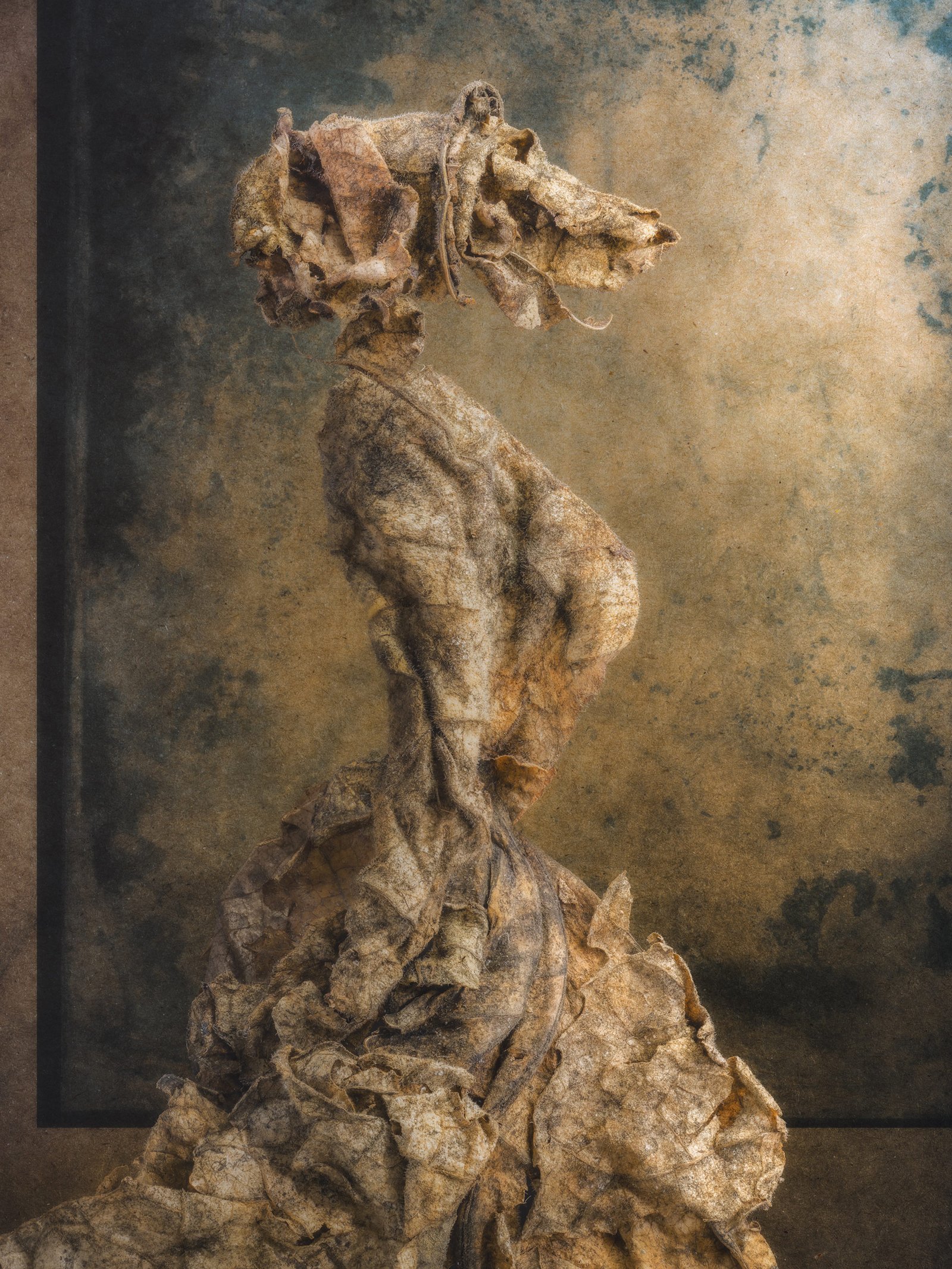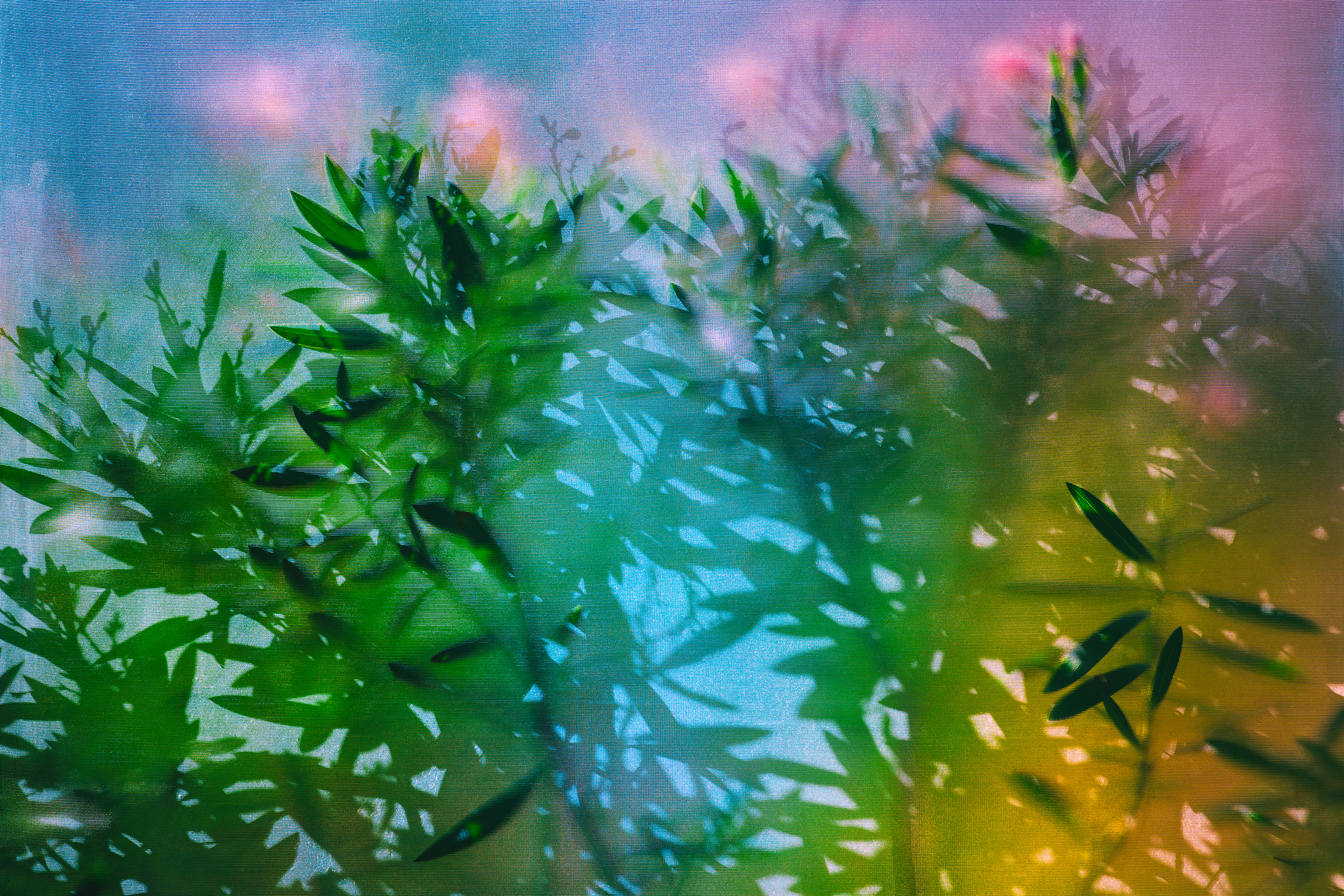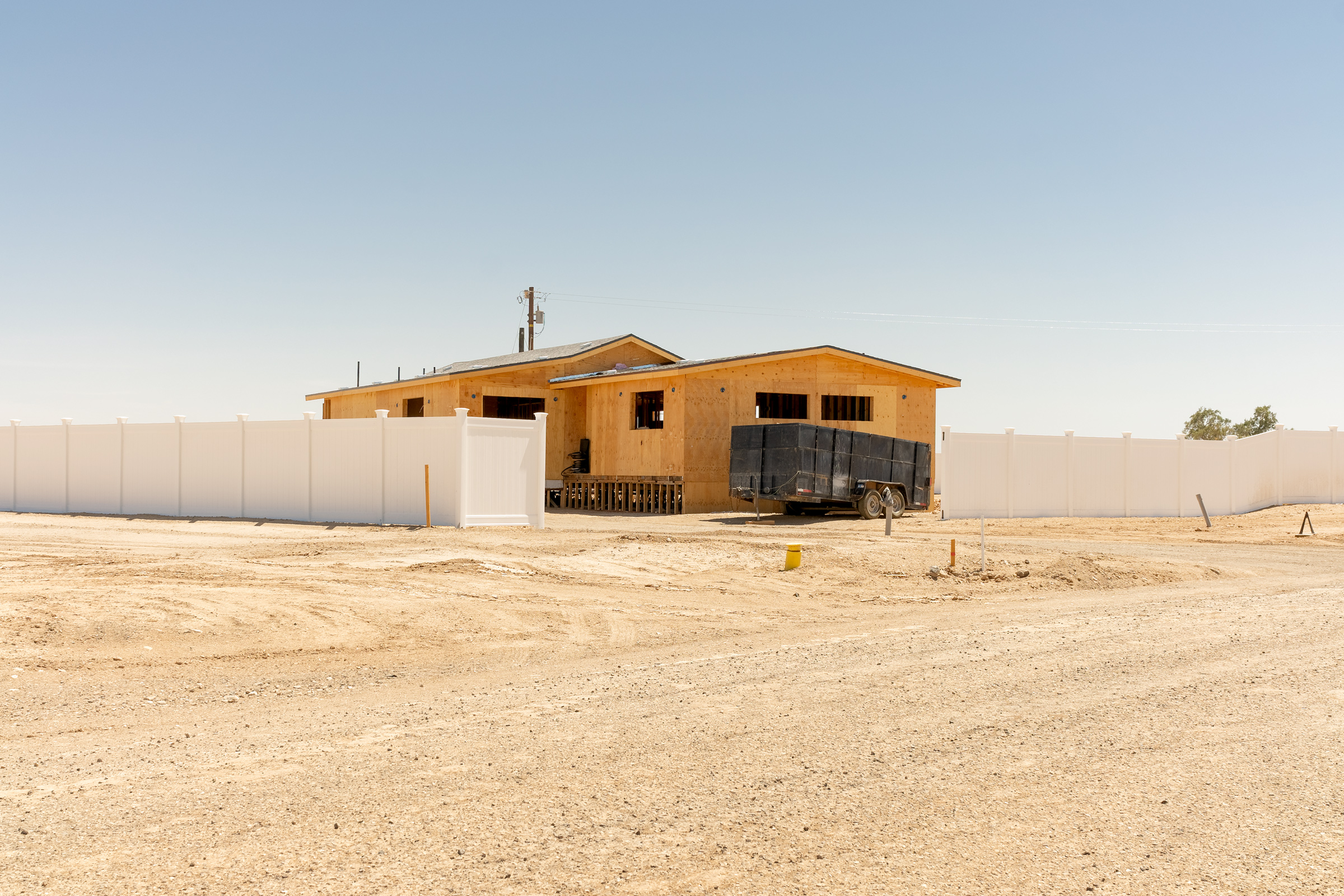All photographs are for sale. Please contact David directly by email for details and purchase inquiries.
Pareidolia is the tendency of humans to assign meaning onto something; usually inanimate; where there is none.
One could argue that Southern California doesn’t really have seasons. But for a photographer whose main focus is the plant world, winter—the cool and occasionally wet season—is real and can be a source of frustration. As the weather changes, if at all, plants here don’t go through the dramatic transformations of their cousins of temperate climes. Going up in flames being the exception. An outlier is the fig tree outside of my studio. As with all fig trees, it is deciduous, dropping copious amount of leaves on a cue one can only guess. Those leaves are particularly veiny and contorted as they dry. Clutching and fondling them, one’s imagination meanders. Recognizable patterns and shapes emerge, their textures and colors at the liminal space between life and death, harbingers of the next stage, dirt. Could this be the same boredom induced childish behavior exhibited by those who see Jesus Christ in a slice of toast?
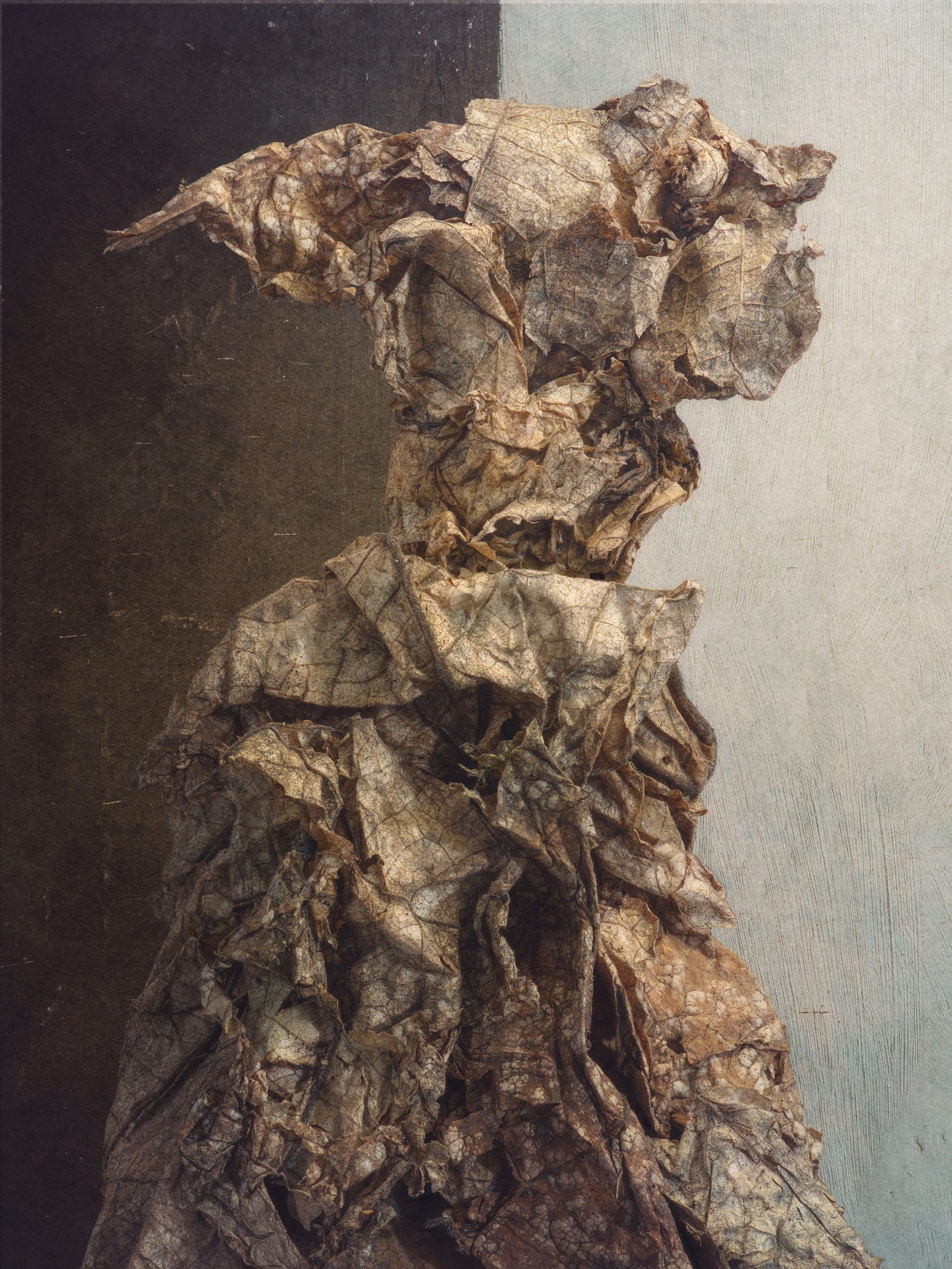
The sculptures are photographed and focus stacked. Reminiscent of the paintings of Giuseppe Arcimboldo and Max Ernst they differ insofar that the simulacra are more accidental rather than premeditated: Pareidolia, the tendency of humans to assign meaning onto something; usually inanimate; where there is none. Portraiture implies the representation of a real person whereas these photographs do not. They are a synthesis of the commonness of people, our singularity. Could it be that this peculiar capacity to recognize faces—and interpret them—takes precedence over other brain functions? Flight or fight? Friend or foe? Does being at the top of the food chain put us in a select group of beings whose only concern is our own kind? And does this exaggerated survival skill gain prominence with age as our capacity to fight back diminishes? Or will this commonness be lost and rendered obsolete as we face another singularity? The technological one, that will make pareidolia seem even more quaint in the presence of intelligence that far surpasses our own.
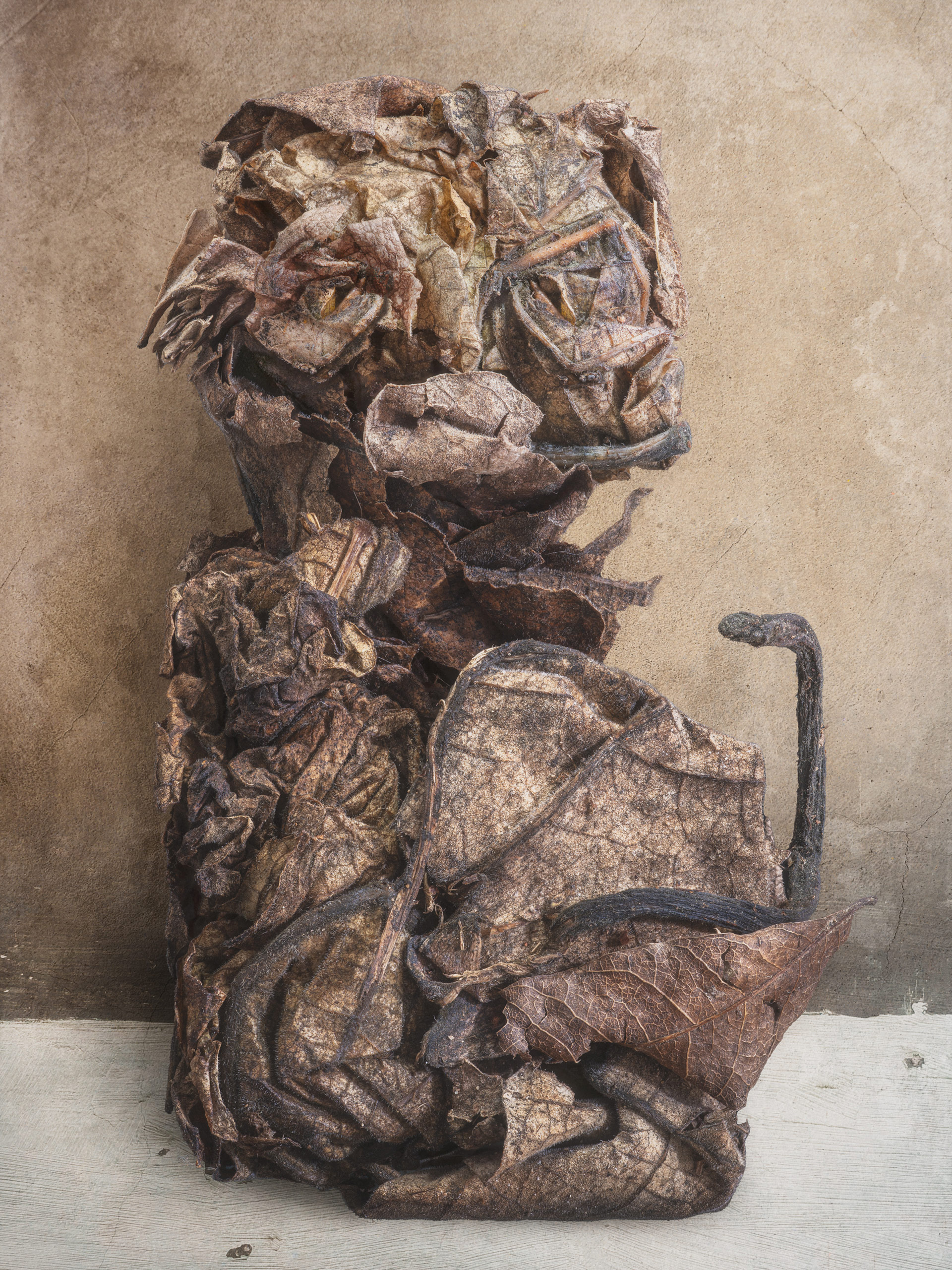
Finally, is portrait photography in its concrete form, and by tradition, self-limited by its medium and constrained to show some human physicality? Or can it depict and elicit uniquely human characteristics by other means? These images exist and do meet the definition of portraiture, not by convention, but because of a shared selective retention that drives cultural evolution. They are memetic and can only be explained because of a collective primeval understanding of what makes us unmistakably human.
By convention, photographic portraiture implies the representation of a real person whereas the following photographs do not. These aren’t depictions of actual people but a synthesis of the commonness of people. If art is conversation, can’t the subject of a photograph— as with painting—be just a vehicle, a metaphor ?
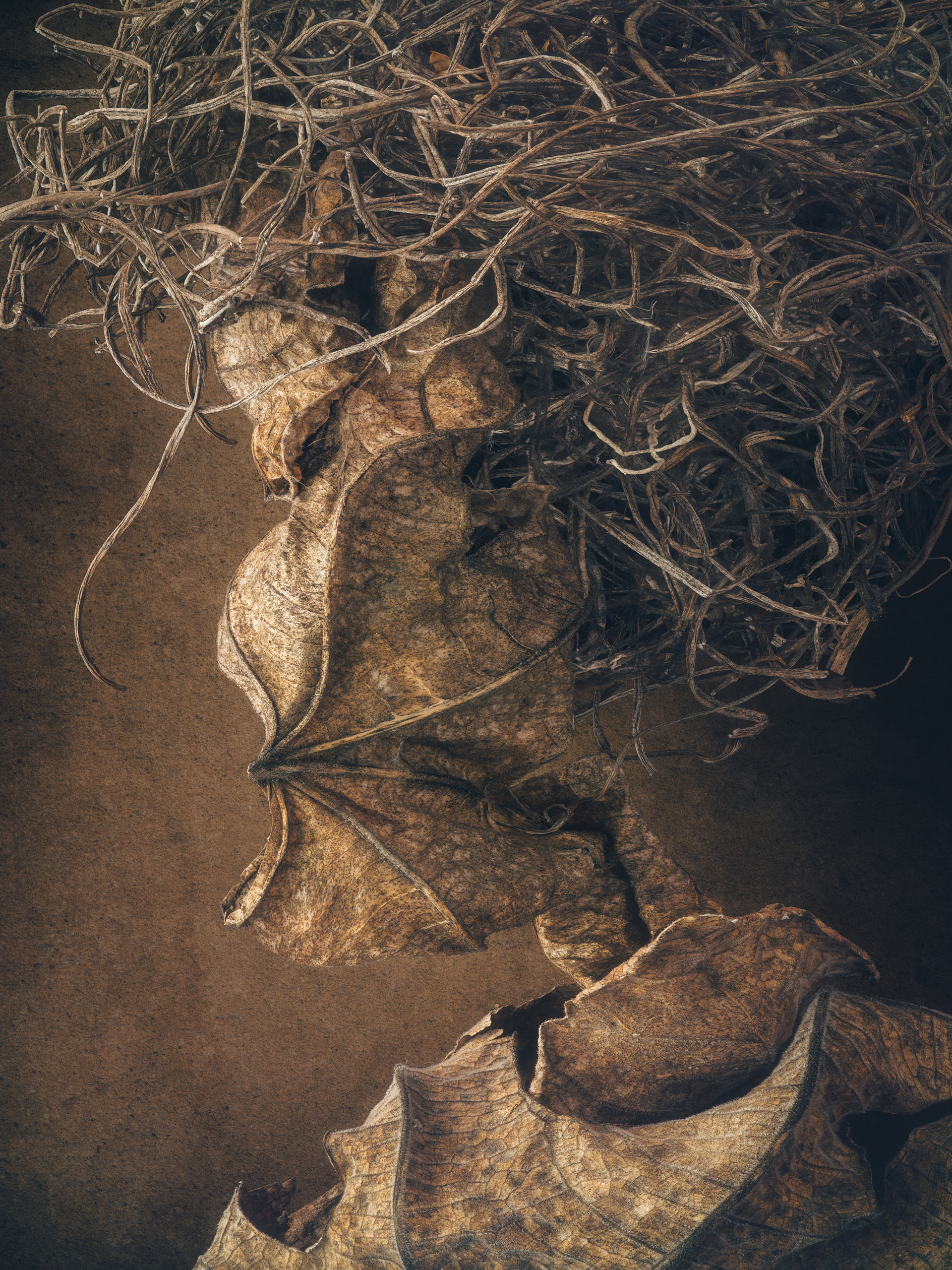
Pareidolia is the tendency of humans to assign meaningful interpretation onto something; usually inanimate; so that one sees meaning where there is none. We all do it, artists in particular. Either encouraged through training or from simple predisposition, the artist seems to be unusually susceptible —adept?—to this delusion of the senses.
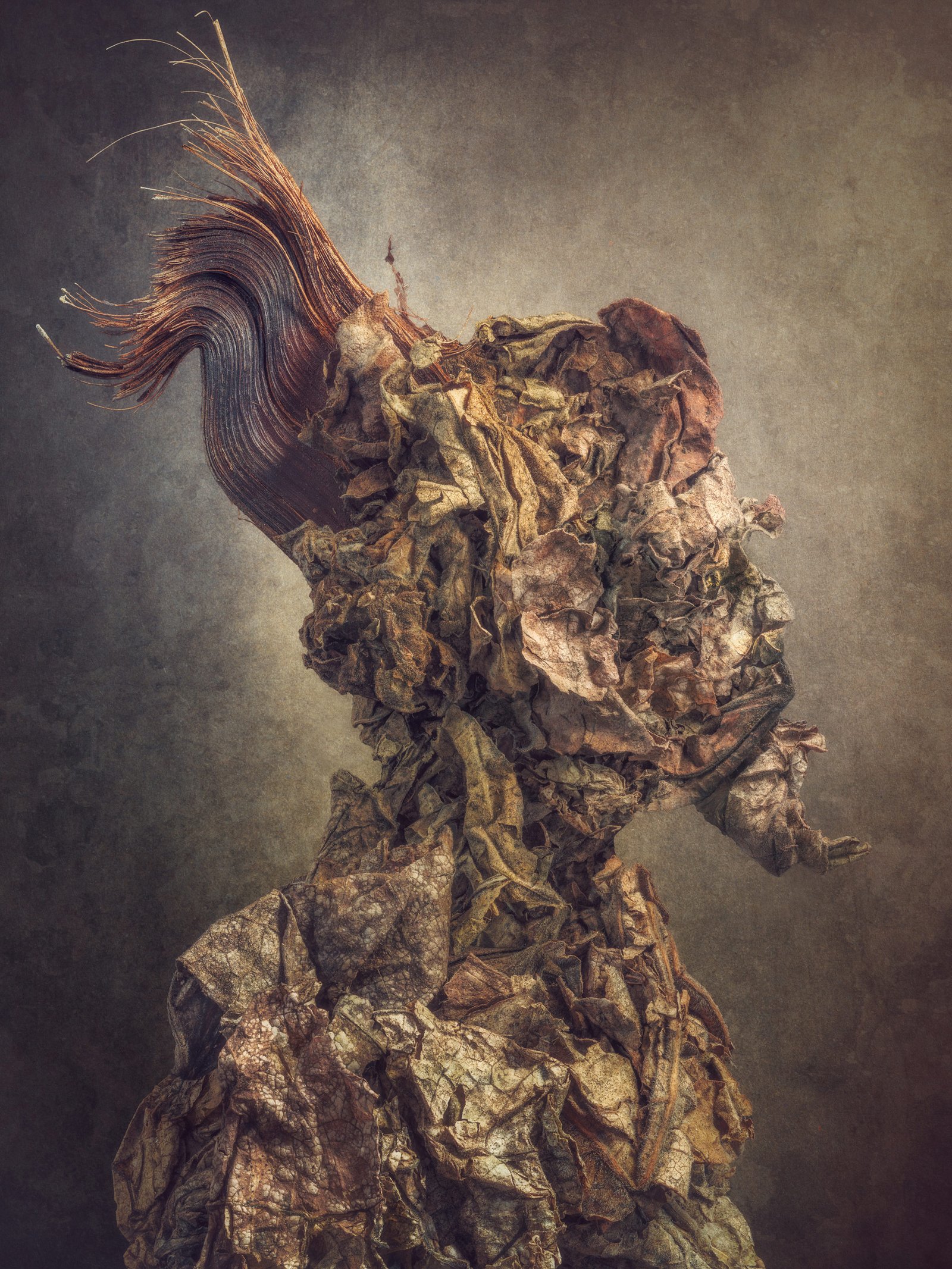
The photographs proposed do not depict any actual human anatomy. They are physical sculptures made from dead fig leaves, photographed and focus stacked. Those leaves are particularly veiny and contorted as they dry. Clutching and fondling them, one’s imagination meanders. Patterns and shapes emerge. Their textures and colors at the liminal space between life and death.
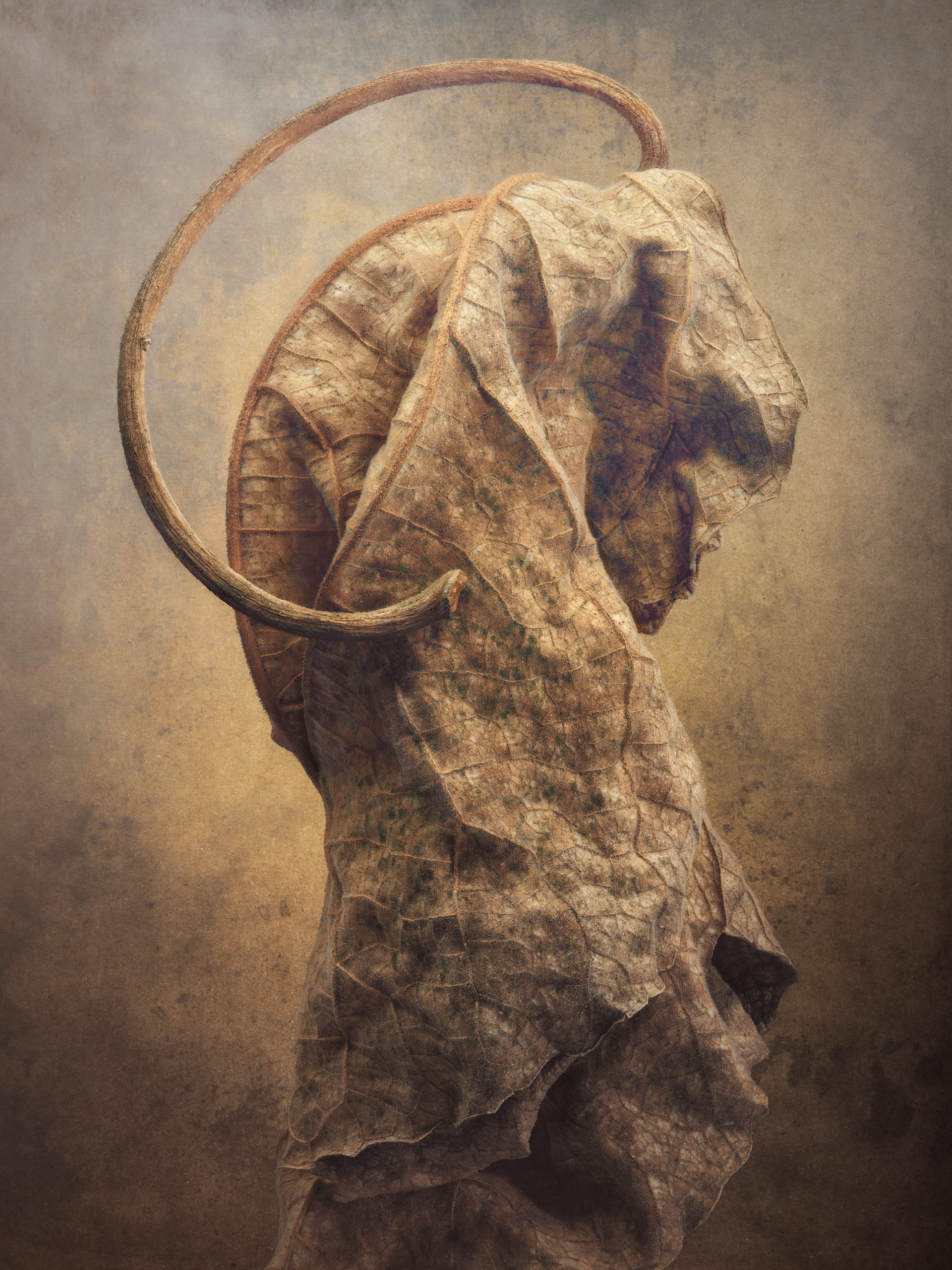
It has come to my attention that some may believe these images are the products of generative artificial intelligence. They are not. Currently, AI depends on prompts—inputs—to generate an image. AI (still) depends on communications skills, an emitter, the person, and a receiver, the computer. The emitter and the receiver rely on an agreed structure of communication usually conveyed by speech, writing, or gesture. The images I make do not rely on language for them to materialize.
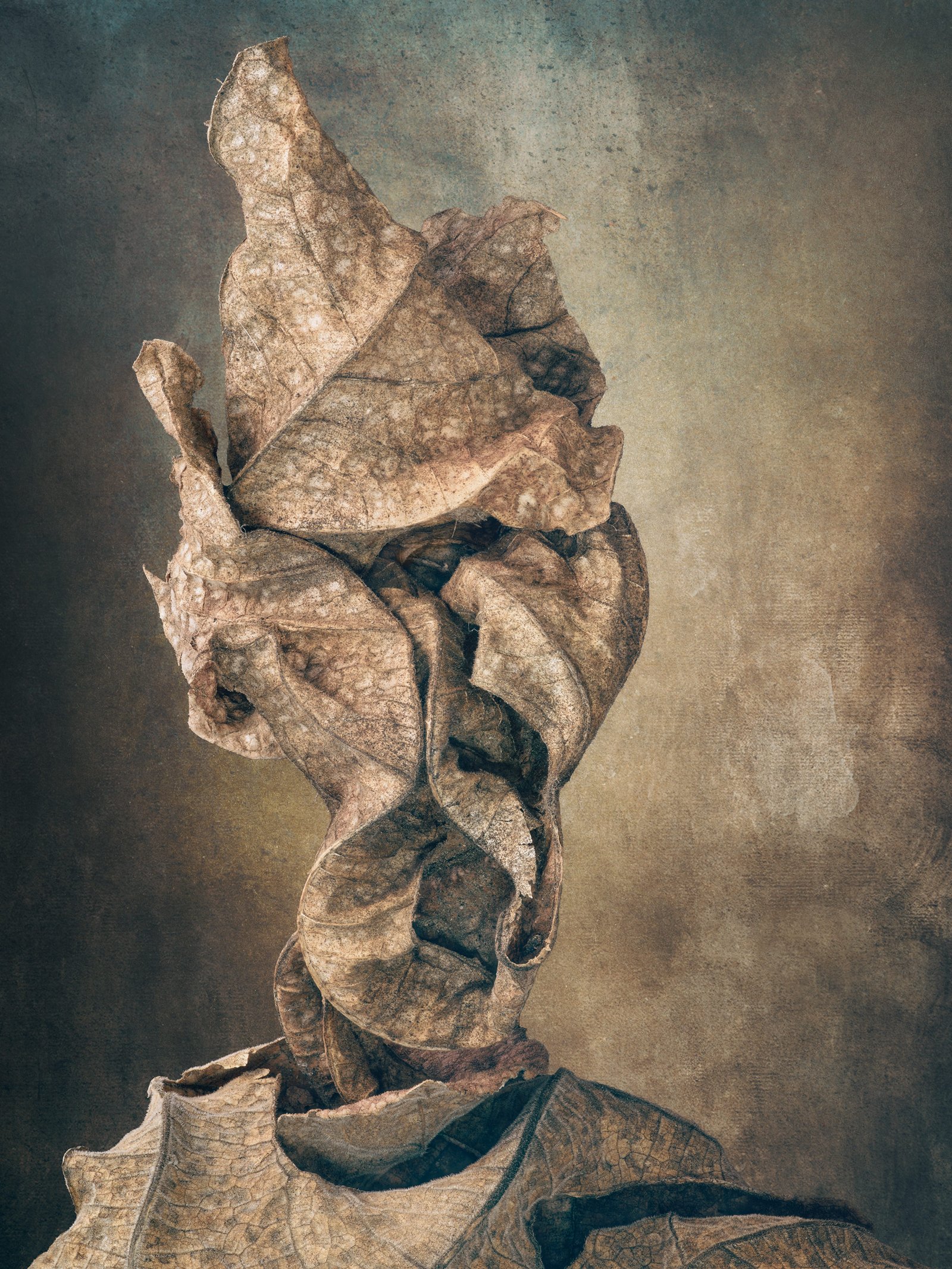
One need not be literate to experience pareidolia. Of course, most people do not spend their time toasting bread in the hope of manifesting simulacra. And if they did, God bless them, this would not fit the true definition of pareidolia. True pareidolia is impulsive rather than premeditated.
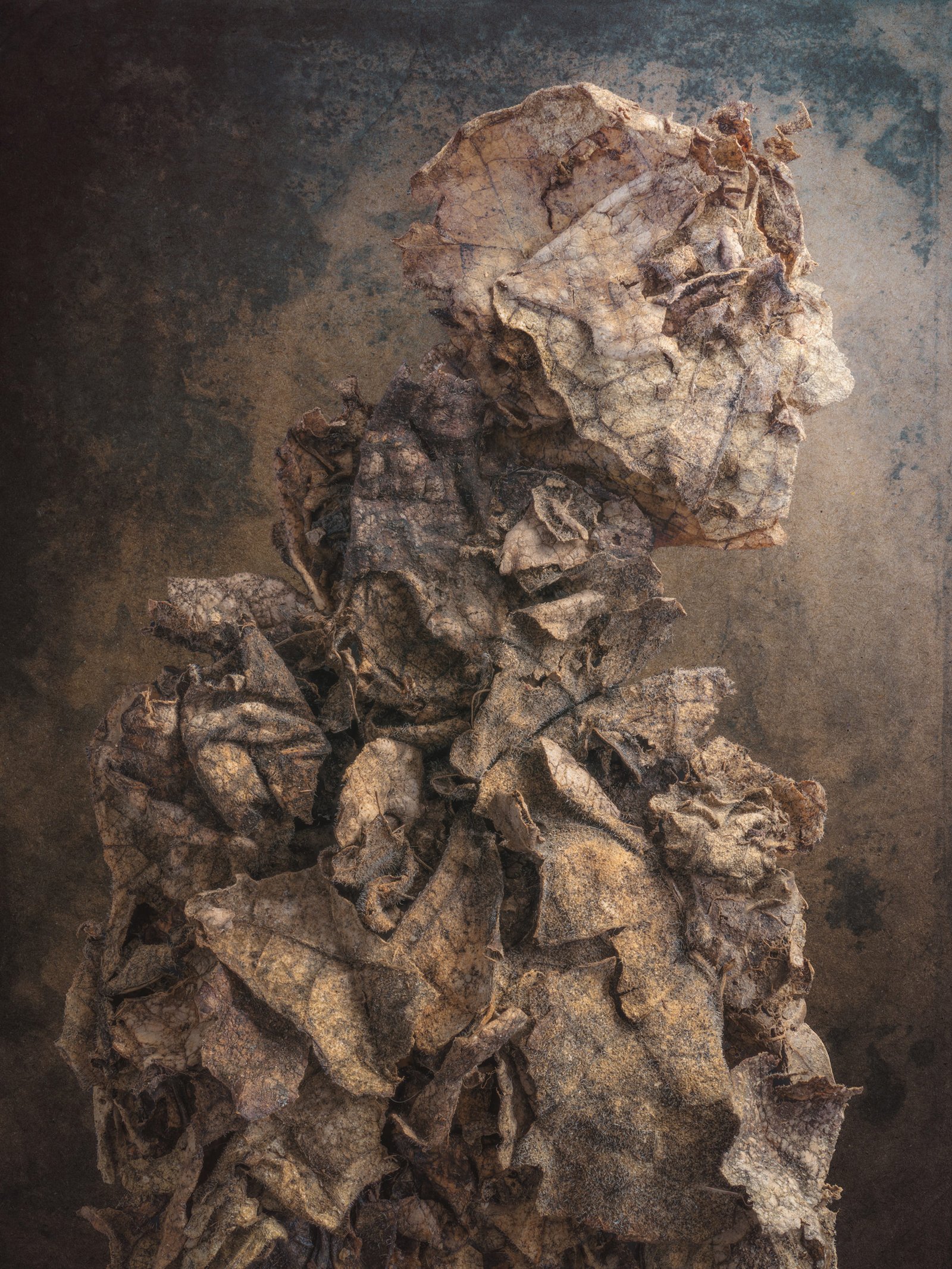
The process is simple. Gather a bunch of leaves, jam them together, add a little water for malleability and start noodling. It is important to not overly think it, being careful not to force an outcome but rather let pareidolia do its thing. I suspect that the more images one has studied and memorized, the faster the hallucinations will manifest themselves.
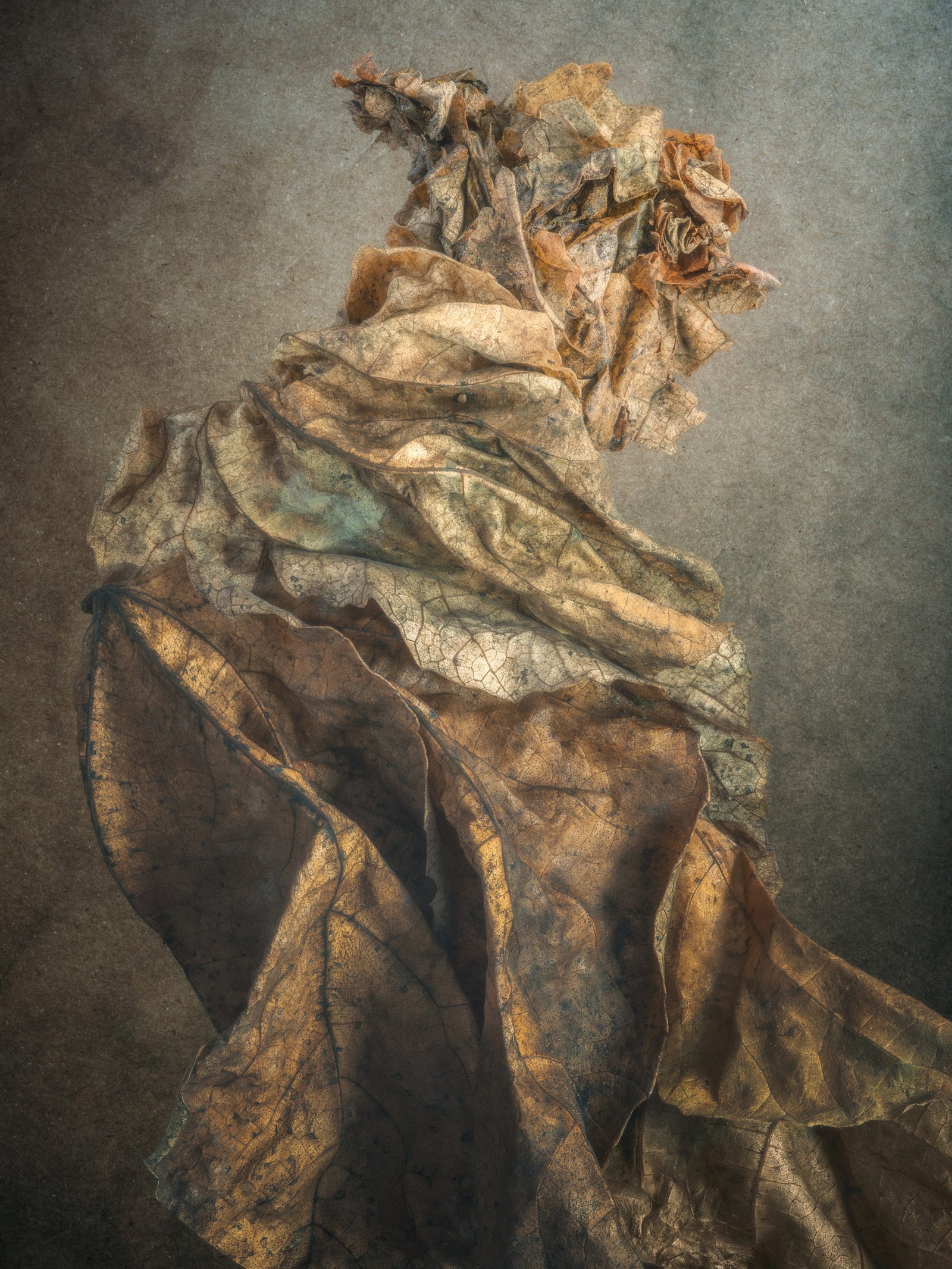
Facial pareidolia is usually the first manifestation of the hallucination. Turn the pile of leaves this way and what was once a cat is now the head of a samurai. It is at this precise moment that the conscious takes over: a sword made from a blade of grass, and his chonmage—a ponytail—a bunch of crumpled leaves.
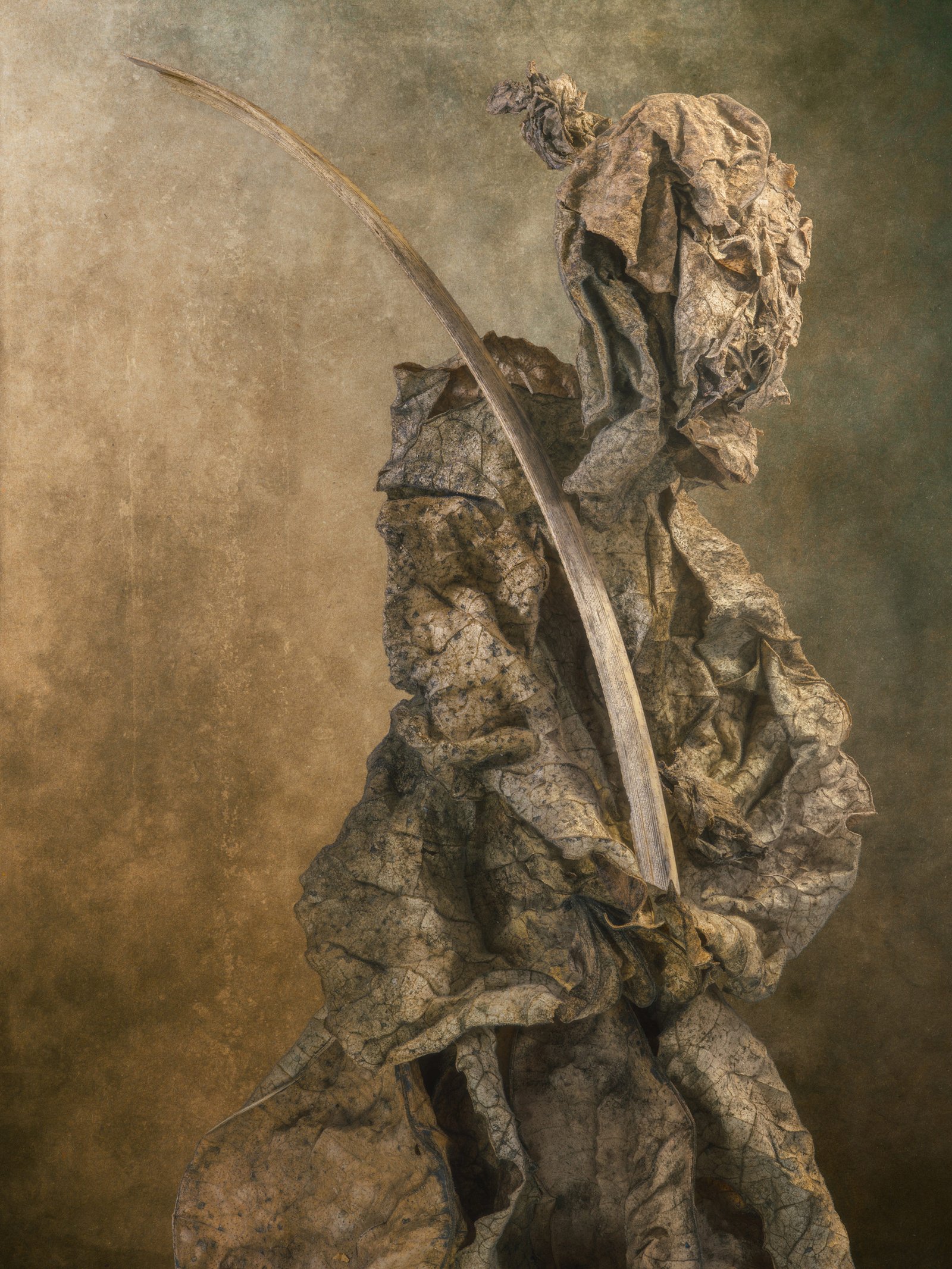
“There are only two styles of portrait painting: the serious and the smirk.”
Charles Dickens
The resulting hallucinations seem to fall into two distinct groups: Utterly frightening or funny. Or as Charles Dickens put it, “there are only two styles of portrait painting: the serious and the smirk.”
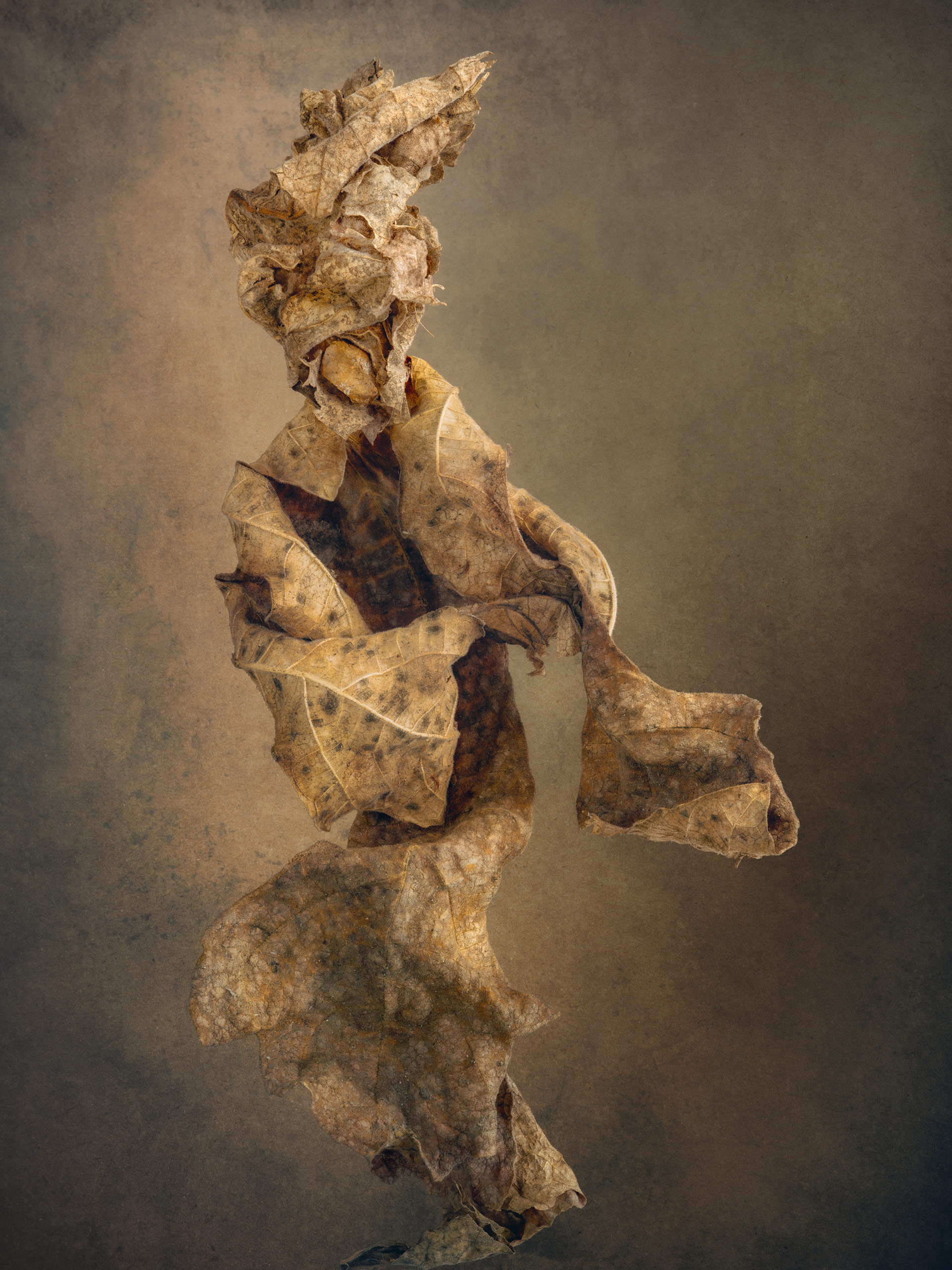
These images exist and do meet the definition of portraiture, not by convention, but because of a shared selective retention that drives cultural evolution. They are both implicit and explicit. They are memetic and can only be explained because of a collective primeval understanding of what makes us unmistakably human.
